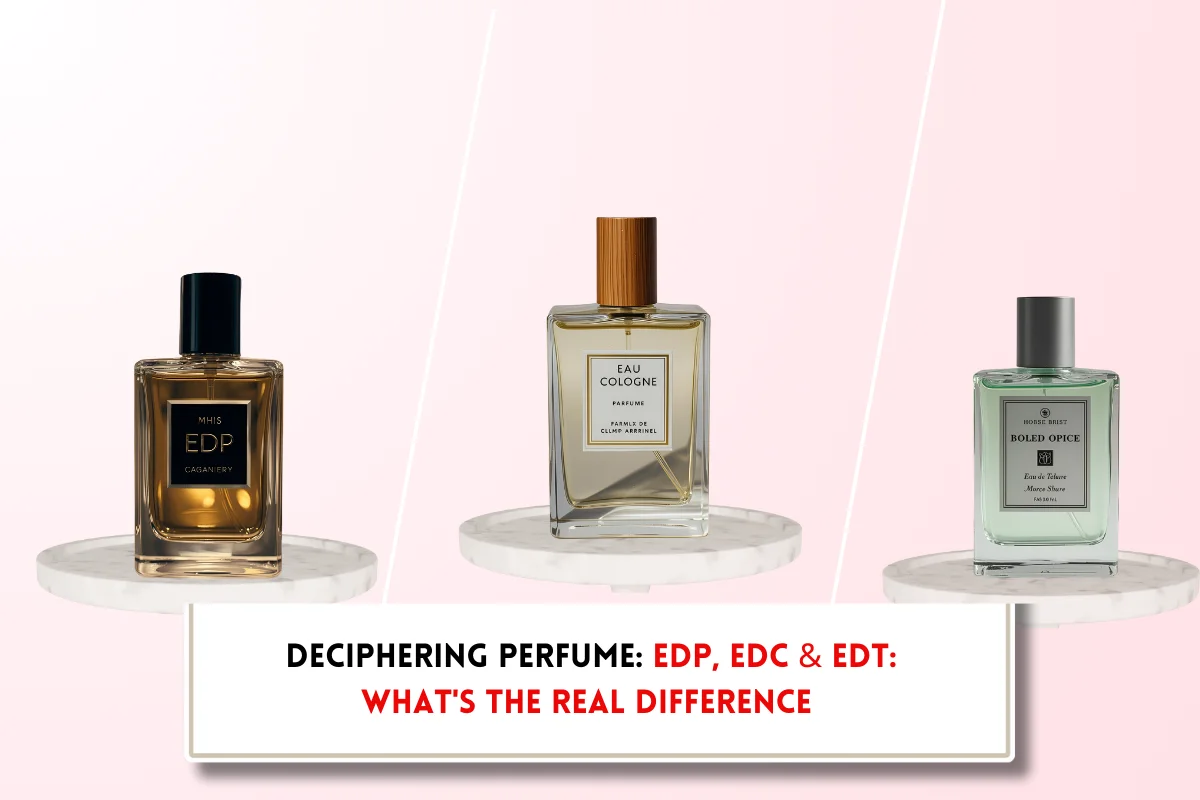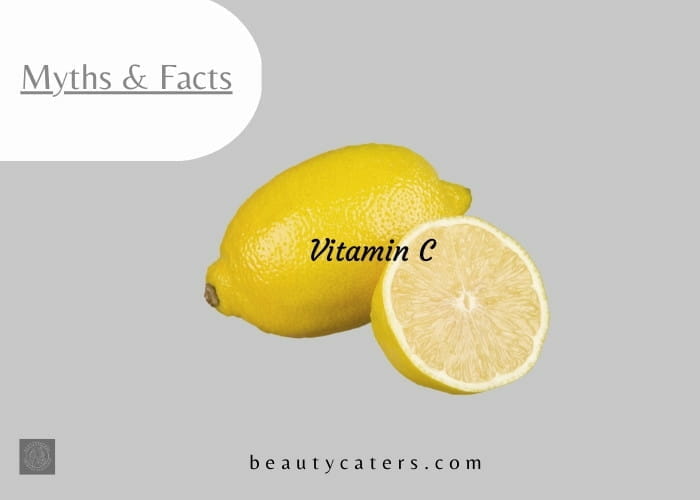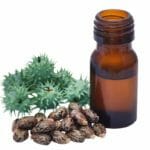How to make micellar water (Homemade solution)
At BeautyCaters, our expert team independently curates every recommended product. Purchases through our links may earn us a commission. Explore our transparent selection process.
Are you spending money on expensive micellar water?
Did you know that you can easily make your own at home? But how to make micellar water at home?
Using just a few simple ingredients, you can make your very own homemade micellar water that is non-toxic, alcohol-free, and smells divine.
And the best part? It’s an all-in-one product that cleanses, tones, and moisturizes your skin. In this blog post, we’ll show you how to make micellar water at home using the Beauty Caters recipe. So why not give it a try and see the difference it makes for your skin?
Table of Contents
Introduction to Micellar Water
Micellar water contains tiny oil molecules. These molecules are attracted to the impurities, dirt and sebum of our skin. This is what makes micellar water an excellent cleansing product. Micellar water also works to remove long-lasting lipsticks.
Micellar water is made up of micelles that are suspended in the aqueous (water-based) ingredients of the cleanser.

This all sounds pretty sophisticated, which is why most micellar waters are quite expensive, but it’s actually quite simple and doesn’t really distinguish these cleansing waters from other types of cleansers that also contain micelles.
The idea of micellar water is that the oils and dirt on your skin unite with the hydrophobic tails of the surfactants and are removed with them.
Micellar water is a water-based cleanser that is normally used to gently cleanse your face without the need to rinse afterwards. It looks like water, but it has cleansing and moisturizing properties.
Micellar water can be used as an all-in-one cleanser, and is especially suitable for people with sensitive skin. It leaves the skin moisturized and soft without drying it out.
What are micelles?
Micelles are tiny clusters of surfactants that form when they are mixed with water or other aqueous ingredients in a cleanser.
These surfactants have a hydrophilic head that loves water and a hydrophobic tail that fears it. When mixed with water, the tails of the surfactants come together to create small spherical structures called micelles.
When using a low concentration of surfactants in a leave-on product, like the one we have here, the micelles maintain their shape and remain spherical.
This happens because the surfactant tails continue to hide from the water and stay clustered together, creating these miniature structures that help to cleanse the skin.
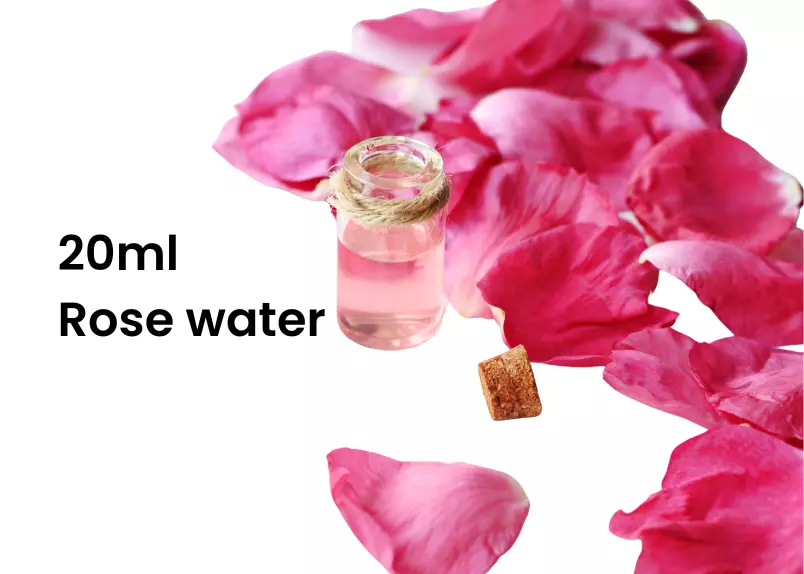
What are surfactants?
Surfactants play a crucial role in reducing the surface tension between liquids. They possess versatile properties and can serve as detergents, emulsifiers, or exhibit other beneficial characteristics.
Many commonly used products such as detergents, shampoos, and shower gels rely on the presence of surfactants for their effectiveness.
How to make your own micellar water at home?
The homemade micellar cleansing water is completely natural and toxin-free. This homemade cosmetic is also very flexible and cost-effective. You don’t need a lot of ingredients for this recipe and you can make a fairly large amount with the required ingredients.
If you have oily skin and are concerned about using a product that contains oil, buy or make a product that is non-comedogenic, meaning it won’t clog pores. Most animal oils and waxes are comedogenic, as are some vegetable oils. If you have allergies, watch the ingredients as well.

What are the ingredients needed to make micellar water?
Many brands on the market contain all kinds of oils, pure water, fruit extracts, grape seed oil, argan oil, plant extracts, etc. The basic concept is that the oil particles are suspended in the water, which makes it an excellent makeup remover.
When you look at commercial micellar water, the idea of having a cleanser is not so tempting anymore. It contains a lot of harmful substances, such as alcohol, chemicals, fillers and many other ingredients that we want to avoid.
The basic ingredients for 100 ml of preparation:
- 50 ml distilled water
- 20 ml rose hydrolate
- 20 ml of witch hazel hydrolate
- 5g of glycerin, 5%.
- 3gr of argan oil
- A preservative the Cosgard or the vitamin E
- Essential oil of geranium bumblebee.
Preparation steps:
- Pour the rose water into your empty bottle and add the rest of the ingredients.
- Shake the container to mix well and repeat the gesture each time you are about to remove your make-up.
To use this zero-waste micellar water, proceed as usual by pouring a small amount on a cotton ball (washable, even better!) and washing your face, but also your eyes and lips. No restrictions with this natural solution!
If you are looking for a simpler micellar water recipe, you can omit several ingredients: essential oil, rose hydrosol or witch hazel, and argan oil. You would be left with distilled water, preservatives and glycerin.
What are the properties of the ingredients used?
To help you better understand the choice of ingredients, here are their characteristics and the role played in the recipe. These details will help you to modify the ingredients of the basic recipe according to your age and type of skin.
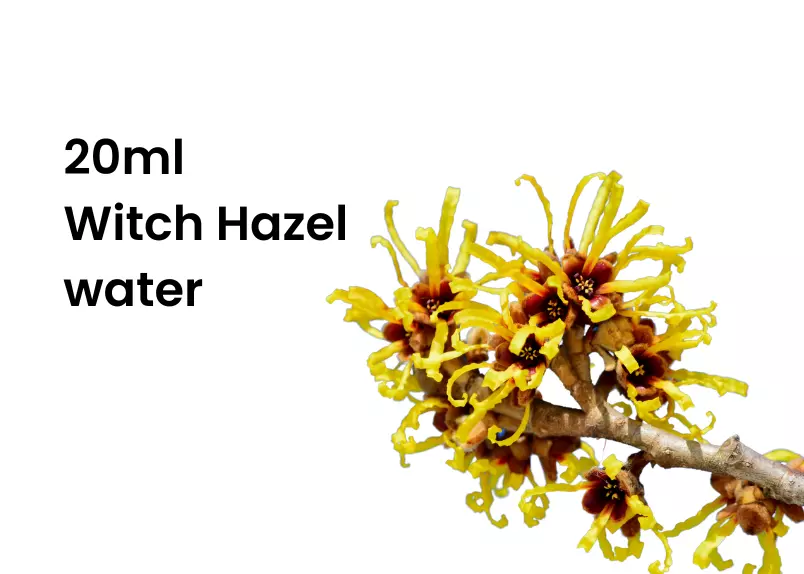
1. Hydrolat or rose water
Rose water is a beautiful ingredient to have in your bathroom. With its refreshing, moisturizing, toning and soothing abilities, it is one of those natural and organic ingredients that are a must-have.
Rose water helps maintain the pH of your skin, which is also one of the reasons why it is in the DIY cleansing water recipe. At the same time, rose water is beneficial in fighting acne. Not only does it help remove excess oil from the skin, but it also soothes irritated skin and reduces redness due to its anti-inflammatory properties. Rose water has anti-aging properties and is perfect for sensitive skin.
2. Witch Hazel hydrosol
A natural astringent, witch hazel is a natural remedy for skin problems such as acne, eczema and psoriasis. It is a natural tonic that cleanses the skin and helps firm the skin’s elasticity.
With its antioxidant properties, witch hazel helps fight free radicals, minimize cell damage and combat signs of aging such as wrinkles and discoloration. Other benefits of witch hazel also come from its antimicrobial and anti-inflammatory properties. It shrinks pores, soothes itchy skin and reduces puffiness.
3. Argan oil
This liquid gold is well known for its amazing skin benefits. Its comedogenic rate is 0, which makes it an ideal oil for acne because it does not clog pores! In addition, argan oil also moisturizes dry skin, making it smooth, healthy and soft.
Rich in vitamin E, argan oil also has anti-aging properties. Thanks to its antioxidants, it fights free radicals, slows down the signs of aging and keeps the skin healthy. In addition to acne, argan oil is a natural aid for other skin problems; it is able to soothe redness and inflammation.
4. Geranium essential oil
With a feminine, balanced scent, the geranium essential oil has antiseptic, antibacterial properties that are a natural aid in the eternal battle against acne. With a pleasant aroma, geranium oil also nourishes the cells, fights infections and keeps the skin hydrated at the same time.
Geranium oil is able to heal inflammations, soothe irritated skin in case of rashes, eczema and rosacea. It tightens pores and can also be used as a tonic. Thanks to its antioxidant properties, it also helps to slow down the aging process: it stimulates regeneration and firms the skin thanks to its astringent properties.
5. Vegetable Glycerin
A popular ingredient in many skin care products, vegetable glycerin is derived from plant sources, a natural, non-toxic, water-soluble compound.
Vegetable glycerin rarely has side effects. Used alone, it can draw water from the skin (it is a humectant) but not when diluted.
Other than that, it is non-comedogenic, and an excellent addition to vegan cosmetics. It is an emulsifier with soothing and moisturizing properties that have positive and beneficial effects on the skin. It helps regulate sebum production on the skin, it can be used as a toner, cleanser and humectant.
6. Preservative
Cosgard or Geogard is one of the few broad-spectrum preservatives that is accepted for ECOCERT-certified cosmetics. It is sufficient to use about 1% of the final concentration to preserve your product.
You can vary the oils and essential oils to obtain different mixtures.
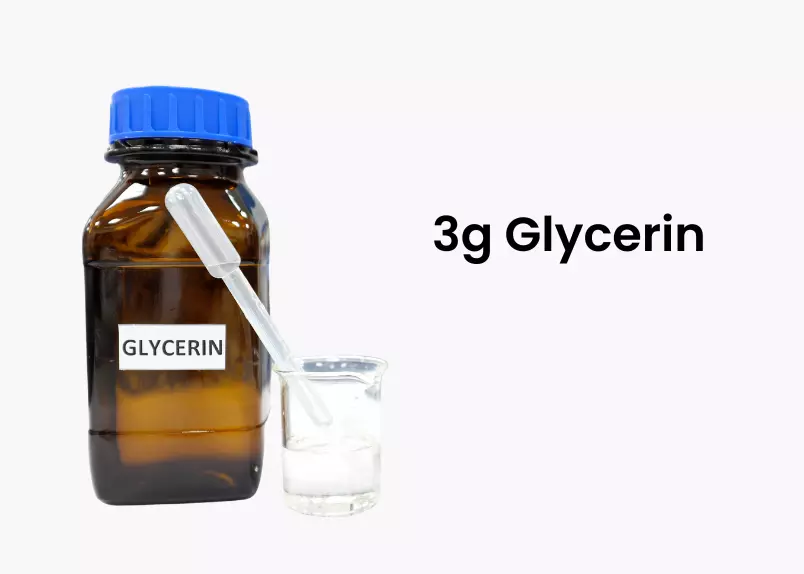
Variations of the recipe for homemade micellar water
Another benefit is flexibility. By making your own natural micellar water, you can choose the ingredients according to your skin type:
The water keeps the skin’s pH balanced. Since this is a water-based recipe, it requires a preservative. You can use Cosgard or any other you know that works for you.
For the carrier oil, you can also vary it according to your needs. Its function is to moisturize and nourish.
Choose your hydrolate for your micellar water recipe
The hydrolat tightens the pores and cleanses the skin without depriving it of its natural oils. You can replace the rose water hydrolate depending on your skin type.
Chamomile hydrosol is excellent for sensitive and anti-inflammatory skin. It is a very mild hydrosol.
Helichrysum, the immortelle, is recommended for its anti-aging properties. It tightens the skin and stimulates the healing process.
Cucumber hydrosol is refreshing and cool, this hydrosol is an excellent astringent with anti-inflammatory properties.
Lavender hydrosol is suitable for all skin types, this hydrosol is gentle and excellent for calming irritations and allergies and has great cleansing properties.
Rosemary hydrosol stimulates blood circulation. It is excellent for fighting skin conditions and can soothe damaged skin.
Tea tree is excellent for acne-prone skin, helping to reduce irritation and redness and tighten pores.
Peppermint hydrosol is refreshing and invigorating. This hydrosol is anti-inflammatory, antibacterial and ideal for oily skin.
Some brands of micellar water (the most expensive) use birch sap. Birch is well known for its healing abilities. You can also add a drop of birch essential oil to your water if you don’t have trees nearby. Be careful because it is very strong! One drop is all you need. Warning: If you are sensitive to aspirin, it is best not to use birch.
When purchasing a hydrosol, make sure it is of the highest quality, 100% pure and certified organic.

How to apply your micellar water
- Apply a little homemade micellar water on a cotton ball and then on your face by small circles
- Press on the whole face, avoiding rubbing. Leave it on for a few seconds and remove it.
- After finishing the first round, take another cotton ball and repeat the process until the ball is clean.
- Once done, wait until the skin is completely dry and continue your skincare routine.
You can also spray the product directly on your face and wipe it off with a cotton ball. Repeat the procedure until the cotton ball is completely clean. If you prefer this method, be careful with your eyes.
If you have waterproof makeup or stained lipstick, you may need to rub a little, but try to avoid doing so. The rubbing can irritate your skin.
This homemade version is so much cheaper than the purchased one. It is shelf stable and will last about a month, depending on how quickly you use it.
While you don’t have to rinse your skin after using micellar water, if it tightens your skin or you don’t like the way it feels, you can rinse it off after use.
The uses of the micellar water
There are many uses of micellar water, here are few examples:
Is micellar water good for acne?
Some say that micellar water is great for acne, while others say that you can somewhat benefit from micellar water, but it doesn’t specifically target your skin problems.
When suffering from acne, breakouts and pimples, it is important to have a proper skincare routine.
By cleansing your skin regularly, you avoid clogged pores, remove dirt and excess oil. That’s what micelles are for.
In addition, this cleanser will leave your skin hydrated and not deprived of water and your skin’s natural oils.
Micellar water has a proper pH level that helps preserve the skin’s healthy barrier function.
When making your homemade micellar water for acne, substitute rose hydrosol with rosemary, tea tree or peppermint.
Geranium essential oil is often recommended for acne.
For the carrier oil, avoid comedogenic oils (which promote blackheads and clog pores) such as vegetable almond oil or vegetable coconut oil. Argan oil works very well!
Is micellar water good for dry skin?
Because it is soft and moisturizing, micellar water is good for dry skin.
Preferably opt for witch hazel hydrosol or chamomile hydrosol, excellent for sensitive skin
Is micellar water used as a toner?
Yes and no. Commercial micellar waters (the least natural ones) are intended for cleansing. They are not studied (nor sold) for that.
Micellar water is best suited for whom?
This micellar water is nourishing and does not need to be scrubbed or rinsed, which makes it ideal for people who are on the go and especially for people with sensitive skin.
While it is generally said to be suitable for all skin types, it can be a little gentle for those with overly oily skin or those who wear a lot of oil-based or waterproof makeup.
Micellar Water Vs Toner – Which is better as a makeup removal?
Toner is often considered a necessary step in any skincare routine, but its real purpose is to restore the skin’s natural pH balance after cleansing.
This is important for maintaining healthy skin, but it does nothing to remove makeup or dirt marks, as it is not a makeup remover.
Micellar water, on the other hand, is a powerful cleanser that can quickly and easily remove even water-resistant makeup.
Micellar water contains moisturizing ingredients that help soothe and hydrate the skin.
As a result, it can be used as a standalone cleanser or as the first step in a more comprehensive skincare routine.
Ultimately, micellar water and toner have their own unique benefits, but micellar water is the best choice for makeup removal.
Micellar Water VS Toner – which is better?
Micellar water and toner are two completely different skincare products, each with its own unique benefits.
Micellar water is a gentle cleanser that removes make-up without stripping the skin. It’s perfect for sensitive skin that wants to avoid harsh cleansers.
Toner, on the other hand, is an important step in any skincare routine. It balances the pH levels of the skin, tightens pores and helps control excessive sebum production. The toner is also great for all skin types, including sensitive skin.
So which is the best? It depends on your individual skin care needs. If you’re looking for a gentle cleanser that won’t strip your skin, micellar water is a great choice.
But if you’re looking for an all-in-one product that will help balance your skin’s pH levels, tighten your pores, and control oil production, toner is the way to go.
FAQs on Micellar Water:
What is micellar water?
Micellar water is a gentle, multipurpose cleanser and makeup remover that contains micelles, tiny oil molecules that attract and lift away dirt, oil, and makeup from the skin.
How does micellar water work?
When applied to the skin with a cotton pad, the micelles in the micellar water cluster together to form a ball, effectively trapping dirt and oil in the center.
Is micellar water suitable for all skin types?
Yes, micellar water is gentle and suitable for all skin types, including sensitive skin.
Does micellar water remove makeup well?
Yes, micellar water is highly effective at removing makeup, including waterproof mascara and long-wearing lipstick.
Do I need to rinse my face after using micellar water?
No, micellar water is designed to be a no-rinse formula. Simply apply it to your skin with a cotton pad and let it dry.
Can I use micellar water instead of a cleanser?
Yes, micellar water can be used as a standalone cleanser or as a first step in a double-cleansing routine.
Is micellar water safe to use around the eyes?
Yes, micellar water is gentle enough for use around the eyes and can effectively remove eye makeup.
Do I need to use a separate toner after using micellar water?
No, micellar water is designed to be a multipurpose product that cleanses and tones the skin in one step.
Can I use micellar water to remove sunscreen?
Yes, micellar water can effectively remove sunscreen from the skin.
How often should I use micellar water?
You can use micellar water daily as a gentle cleanser and makeup remover.
Final Words: How to make micellar water?
Making your own micellar water is not only easy but also non-toxic and alcohol-free, and it has a pleasant fragrance. With its rising popularity, it is now readily available from many manufacturers.
So, whether you choose to make your own or purchase from a store, incorporating micellar water into your skincare routine can provide numerous benefits for your skin.
Do you know you can clean your makeup brushes using micellar water? We have a guide for the same!


